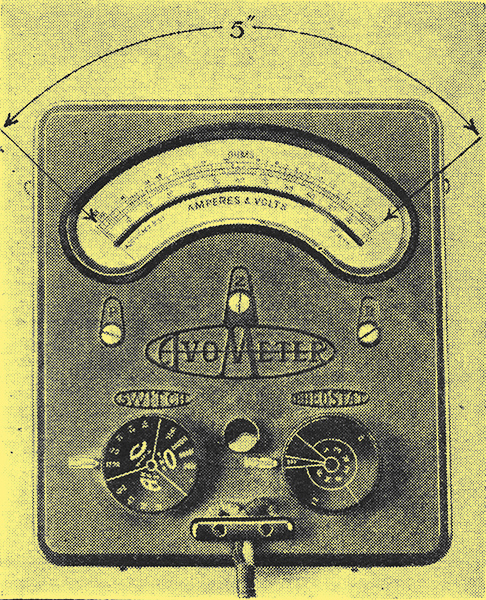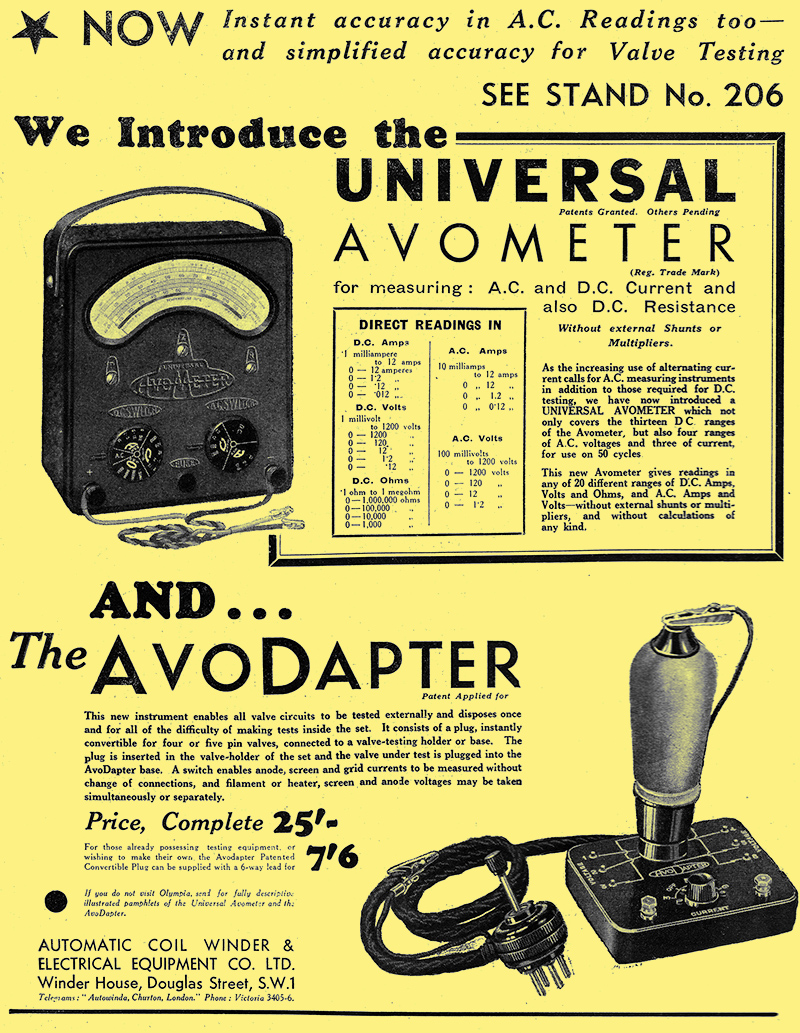|

The scale length of a measuring instrument has an important bearing on the accuracy with which readings may be taken.
Everyone knows that it would be ridiculous to choose, say, a meter rated at 0-100 mA when it is anticipated that the current to be measured will be in the order of 1 or 2 mA. When extreme accuracy is needed, one takes a meter of which the maximum scale reading is only slightly in excess of the current or voltage, for that matter to be measured. Without a veritable array of meters, this ideal can seldom be realised.
Although the need for extreme quantitative accuracy seldom arises in ordinary wireless work, the ability to appreciate small changes is often valuable. This applies particularly to a detector anode current meter, which is certainly one of the most valuable instruments the experimenter can possess. Here changes in current are particularly informative, and precise quantitative measurements are seldom important.
It is not always appreciated that, from the point of view of sensitivity, the length of a meter scale is just as important as its range. Put another way, it should be remembered that accurate readings can be made, and that small changes can be appreciated, equally well with a meter having a short scale and a limited range, as with one having a greater range and a longer scale.
As an example of this, we may take the combination instrument shown in the accompanying illustration; its lowest current range is 0-12 mA, but the scale is approximately 5 in long; consequently, all other things being equal, current readings may be taken just as accurately as with a milliammeter having twice the sensitivity (0-6 mA) but with a 2½ in scale.
Below is the advert introducing the Universal Avometer. This appeared in the August 12, 1932 issue of Wireless World.

|